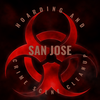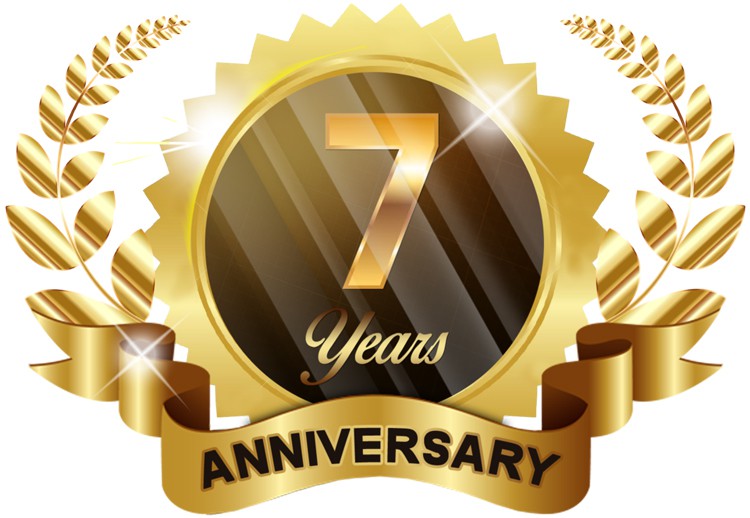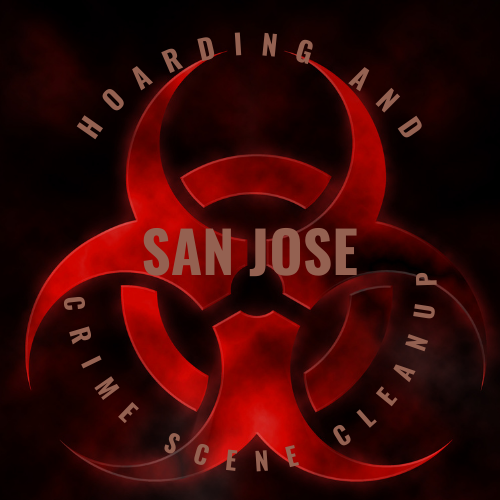Hoarding Resources help
9 Types of Hoarding You Need to Know AboutWhat Hoarding Is and How It Affects an Individual Hoarder and Others in a Home
Hoarding is a compulsive disorder that compels an individual to feel the need to save items such as magazines, books, clothes, toys, incidental objects and sometimes even animals. It becomes extremely difficult for a person who has this psychological disorder to discard anything that he or she accumulates in the home. Hoarding is often present with other mental health conditions, including OCD (Obsessive Compulsive Disorder), depression and anxiety. A hoarding compulsion can also result from feelings of isolation, loneliness or fear. A hoarder can experience relief from these feelings by gathering and keeping large amounts of items. Often, even items of junk can begin to have sentimental value to the hoarder. The behavioral disorder of compulsive hoarding currently affects almost 5 percent of the world's population and can manifest in many varied ways. The one aspect of this disorder that is common among all people who must deal with it as a constant personal issue is the compulsion to gather items and feeling distraught at the idea of losing them. This disorder can result in uncleanliness and accumulations of grime and filth, health hazards and the risk of fire. The Diagnostic and Statistical Manual of Mental Disorders (DSM-5) includes hoarding as a recognized disorder. Mental health professionals advise that although family members and close friends of a hoarder often feel the need to help alleviate this condition as quickly as possible, the disorder of hoarding should be handled with patience, care and understanding. Common Reasons for the Development of Hoarding Disorders There are many different common reasons why individuals develop hoarding disorders, including the following: • Depression and Anxiety • Trauma (such as death, divorce, abuse, injury) • Head Trauma (caused by head injuries or strokes) • OCD (Obsessive Compulsive Disorder) and ADHD (Attention Deficit/Hyperactivity Disorder) • Heredity or Acquired Behavior (from growing up around hoarders) • Fear of Poverty or Loss of Possessions • Fear of Memory Loss • Dementia • Perfectionists Who Seek Perfect Placement for Objects • Obsession with Avoiding Wastefulness Different Types of Hoarding Disorders that Are Common Today For San Jose hoarding clean-out services, we take time to ensure that our team fully understands the type and extent of hoarding disorder that each of our clients is currently dealing with before starting our professional hoarding help cleanup procedures. Different types of hoarding disorders that are common in contemporary lifestyles include the following nine varieties: 1. Animal Hoarding. Animal hoarders have an excessive number of pets that they cannot care for properly. These animals may not get enough food and nutrients and may not receive treatment from a veterinarian or mediation if they become ill. Some hoarders stop removing animal wastes from their homes. If their pets die, animal hoarding sufferers may keep the corpses. This degree of animal hoarding can result in serious infection, disease and the development of mold and harmful germ buildup in the home. Sadly, some hoarders continue adopting more animals and encourage breeding among their current pets, regardless of the filth and disease that may result. These hoarders are not cruel people. They suffer from a delusional disorder that prevents them from understanding that their pets are being malnourished and maltreated. 2. Collector Hoarding. A person with a collector hoarding disorder may choose a subject like model aircraft and drones or Art Deco vases and then try to accumulate and keep as many of these items as possible. However, hoarders differ from collectors in general since they often accumulate any item that seems related to these aircraft, vases or other chosen items for collecting. Also, most collectors are very orderly and tidy since they have the desire to display their collections while hoarders usually create unruly messes. Hoarders often feel uncomfortable and somewhat ashamed of their collected items. They have the desire to possess these items, but usually keep them in a jumbled state of disarray without noticing the large number of items that they have accumulated. Hoarders often consider themselves to be normal collectors and see nothing unusual about their own hoarding activities, neglecting to seek help. 3. Extreme Hoarding. Individuals who suffer from extreme compulsive hoarding often store large amounts of items in disorderly piles and stacks in their homes. There may be one or multiple sections of their homes that are totally unavailable for access and use because they are completely cluttered with items. Extreme hoarding sufferers sometimes fill every room of their houses with huge piles of items in total disarray. Beds are no longer available for sleeping, and the kitchen area is also inaccessible for preparing food. These severely affected extreme hoarding sufferers tend to be embarrassed by the clutter and do not let family, friends or repairmen enter their homes. Extreme hoarders may be injured when tall stacks of items fall on them, sometimes trapping them. These high piles of items frequently breed fold, mildew, roaches, mice and other household pests along with germs and disease. 4. Food Hoarding. Food hoarding sufferers often have an extremely large quantity of food stored in their homes that could not be consumed by all of the members of their households within several years. They habitually shop for more food, even though they do not have enough space in refrigerators, freezers, cabinets or pantries to store it. They hoard food since they fear needing these supplies some day in the future. With accumulations of spoiled and rotting foods throughout their homes, their houses soon become unfit for habitation. This type of food hoarding disorder frequently results from a past traumatic incident which left the hoarder fearing a lack of food. If the rotting foods are removed, these hoarders may experience extreme anxiety. Just the idea of discarding spoiled food can be nearly unbearable for food hoarders. 5. Over-Sentimental Hoarding. People with this type of hoarding issue simply hold on to items because they view nearly every object in their lives as a memento with sentimental attachment. They connect specific emotions with certain objects. They often place great sentimental value on items of all types and sizes that are related to loved ones. These hoarders have a fear of discarding any item since this would be equal to rejecting or destroying its associated memory and connection with an important person in some part of their lives. Over-sentimental hoarders tend to keep everything associated with a specific person, such as receipts from trips or restaurant meals, rocks or seashells collected on a leisure trip or old clothing bought on a trip years ago that they can no longer wear. 6. Paper and Book Hoarding. These hoarders may keep anything and everything made of paper. They often accumulate huge quantities of books, newspapers, magazines, receipts, programs from performances, restaurant menus and many other paper items. They never discard junk mail. Paper and book hoarders run the gamut from very tidy to extremely messy in the way in which they store these items. These hoarders may say that they are planning to use these items to perform research. They may also be sentimental hoarders who keep items due to emotional attachment. People with this type of hoarding disorder also fear legal or financial trouble resulting from discarding old purchase receipts or bank records. Book and paper hoarders run the risk of fire in their homes due to overheated appliances, electrical sparks from wiring or use of burning candles. Their homes may also develop serious problems with mold and mildew, which can cause respiratory ailments. 7. Recycle Hoarding. These hoarders most often develop this disorder due to a fear of wasting anything. They often express intentions of hauling their accumulated items to a recycling center. However, the piles of plastic, cardboard and metal items keep growing, developing coatings of dust and mold. Unhealthy conditions may develop if this person tends to store collections of empty food cartons and packaging. Others hoarders in this category plan to repair broken or damaged items that they have saved, and they may even express their wish to give the repaired items to another person for use. Unfortunately, this plan can result in unruly piles of outdated electronics or worn and damaged clothing. These hoarders may also have great difficulty actually giving these items away. In some instances, recycle hoarders do donate some items or give them to friends. However, they continue to accumulate more items to the extent that the ones given away do not decrease their piles of hoarded items. 8. Shopper Hoarding. If an individual who has the tendency to hoard becomes a frequent and obsessive shopper, this can create serious hoarding issues. Compulsive shoppers seek items to buy and hoard, and today, the Internet is a convenient, easy shopping venue for hoarders. They also justify over-buying since they have the option of returning items that they do not want. Many shopper hoarders express plans to give items that they purchase as gifts or resell them for a profit. However, these people invariably accumulate over-sized stacks of new and unused objects that may still be packed in their shipping boxes and unopened. These hoarders often feel joyful when they can shop for bargains and develop the obsession to constantly acquire more items. 9. Trash Hoarding. Individuals who suffer from trash hoarding disorders may not be able to discard their household trash. They may also go out in search of items that they can confiscate from the discarded trash of other people. These hoarders are often prone to delusional thinking, and they frequently assign false value to waste items. They also suffer acute distress at the thought of ridding their homes of this accumulated trash and garbage. Eventually, the homes of these hoarders are piled high with trash, which can make the home completely unsanitary and unsafe for living. Since household pests like rats and roaches are normally attracted to garbage, a trash hoarder's home frequently becomes overrun with pests that can spread their own waste, germs, bacteria, toxins and disease. How San Jose Hoarding Clean-Out Offers Excellent Clearing and Cleaning Solutions Our San Jose hoarding clean-out crew consists of an experienced team of hoarding help cleanup professionals well-trained for handling hoarding clean-outs of all types and sizes. Our dedicated and compassionate team understands that hoarding is far more than a mental disorder that can cause sufferers great distress. We know that hoarding can result in the development of many kinds of bio-hazards as well as unsanitary and unsafe living conditions in homes. The interiors of homes where long-term hoarders live may be potentially life threatening for everyone who inhabits or enters the premises. When you contact us concerning a serious hoarding problem in your home, we will handle all aspects of your hoarding clean-out discreetly and efficiently, from scheduling your cleanup date through the completion of your cleanup project. Get Professional Help for Overcoming Problems with Hoarding We can also direct you to expert medical attention and treatment for the individual who has a hoarding disorder in your household. Fortunately, excellent treatment and care is available in the San Jose South Bay Area for all types of hoarding disorders today from well qualified mental health professionals. Whether you or another member of your family or household is a hoarder, you should seek treatment from a licensed therapist who specializes in treating hoarding disorders. In some cases, medications are prescribed, and behavioral therapy is often used to address and work toward changing patients' compulsive hoarding activities and alleviating their need to hoard. Our Experienced Team Will Handle Your Cleanup with Utmost Discretion and Professionalism Throughout all stages of the cleanup process, our experts will be patient, discreet, caring and considerate of how difficult this event can be for your family member who suffers from a hoarding disorder. While sorting through accumulations of hoarded items, we will suggest other alternatives to simply discarding all usable items, such as donating to charities, thrift shop suppliers and local recycling and re-purposing groups. If you know of others in your community who have need of our services, we are always available to help anyone who is in need of our specialized cleanup procedures. Long-term hoarding can create breeding grounds for many pathogens. The surprise discovery of a long-ago discarded chicken leg or a dead rat underneath a pile of debris can present the danger of coming in contact with bacteria and germs that can cause serious diseases. All bio-hazards should be avoided for important health reasons. When our team arrives to perform your hoarding clean-out, we will be wearing protective suits and gloves and using special cleansers and equipment for sanitizing your home thoroughly. We will prevent any spread of contaminants that may have accumulated during hoarding, eliminating them from your home's interiors. Common Practices of Our Top-Rated San Jose Hoarding Clean-out Agency As a highly regarded hoarding and clutter cleanup business, San Jose hoarding clean-out services adhere to the following specific codes of conduct for every hoarding clean-out project: • Rapid Response. We offer immediate response to your hoarding clean-out needs. As soon as we receive your request for services, our technician will visit and inspect your property, offering you a prompt cost quote for your cleanup. • Special Equipment. Our cleanup crews carry all of the equipment, masks and protective gear, tools and cleaning agents on our trucks for performing all types of hoarding clean-outs. • Proper Documents. Our professional cleanup teams carry all relevant documentation concerning our services, including proof that all team members are insured and bonded and all necessary permits and licenses. • Responsible Disposal. We dispose of all cleanup waste efficiently and safely using eco-friendly practices. All appropriate items are delivered to recycling centers, and any hazardous materials are disposed of responsibly and safely. We never leave any disposable waste on your property. If your home contains any hazardous wastes that we are not equipped to remove, we will put you in touch with specialized services to handle these dangerous materials. • Competitive Costs. We offer our cleanup services at highly competitive, affordable rates. In our industry, paying high prices will not always result in top quality cleanup. • Empathetic Ear. We listen carefully to the desires and needs of each hoarding clean-out client. If you want our team to search for and salvage certain items during cleanup, we will do so. Our goal is to completely satisfy your preferences and needs throughout the job. • Guaranteed Flexibility. Our cleanup technicians will inspect your home property prior to cleanup and estimate the time needed to complete your project. If your cleanup needs are immediate and urgent, however, we will dedicate more staff and equipment to complete your cleanup procedures within a shorter time period. Contact our expert cleanup team at San Jose Hoarding Cleanup today for an immediate inspection of your property and a very reasonable price quote for your hoarding and clutter cleanup by calling our offices, sending an email or completing a contact form on our company website at SanJoseHoardingCleanup.com. Our experienced, professional cleanup team will perform your cleanup efficiently and thoroughly, with utmost patience, discretion and compassion, according to your specific preferences and needs. |
San Francisco hoarding Clean Up is a Trauma Scene Waste Management Practitioner from the State of California Department of Public Health, is OSHA compliant and has a number of certifications.
|



